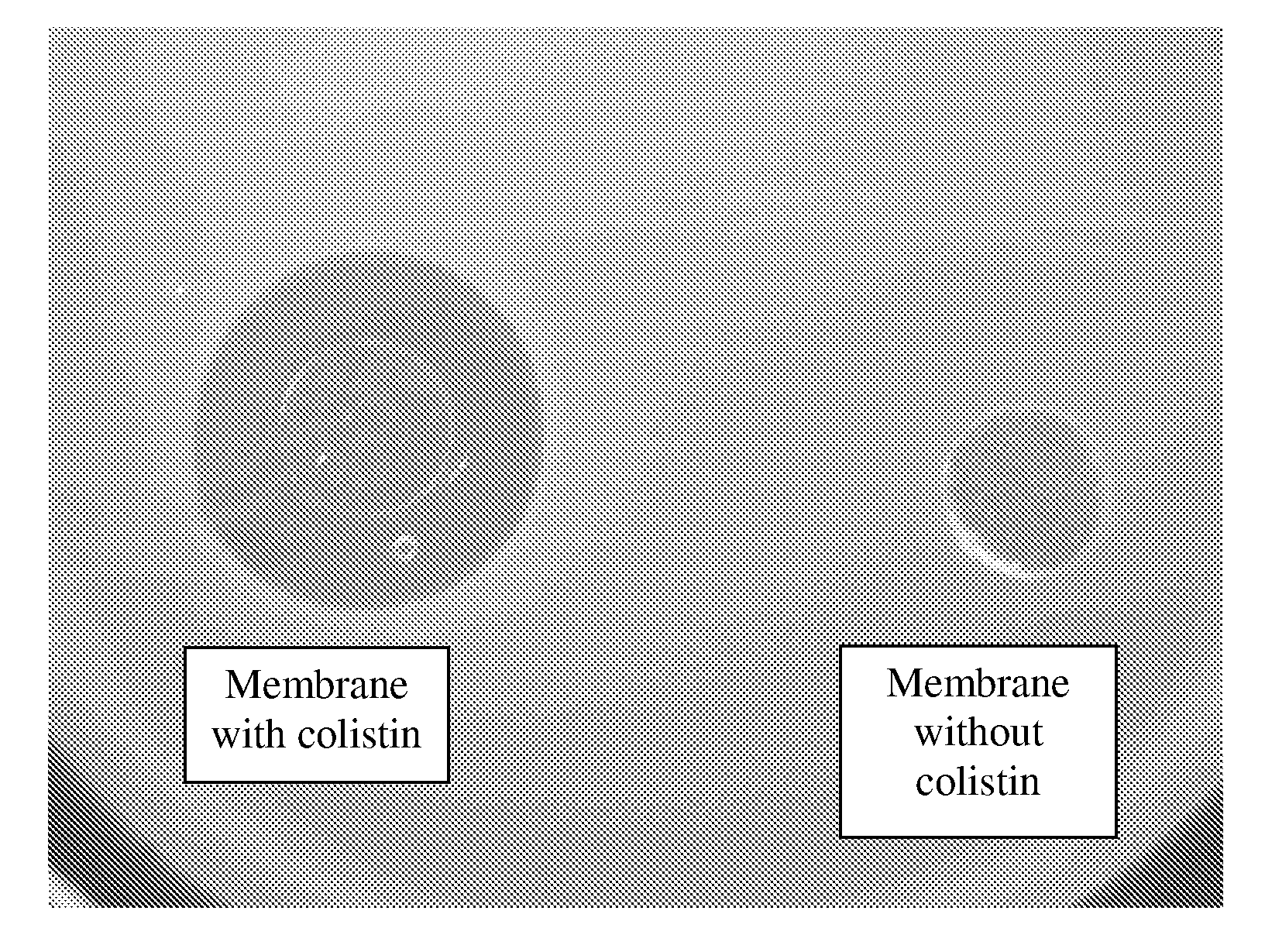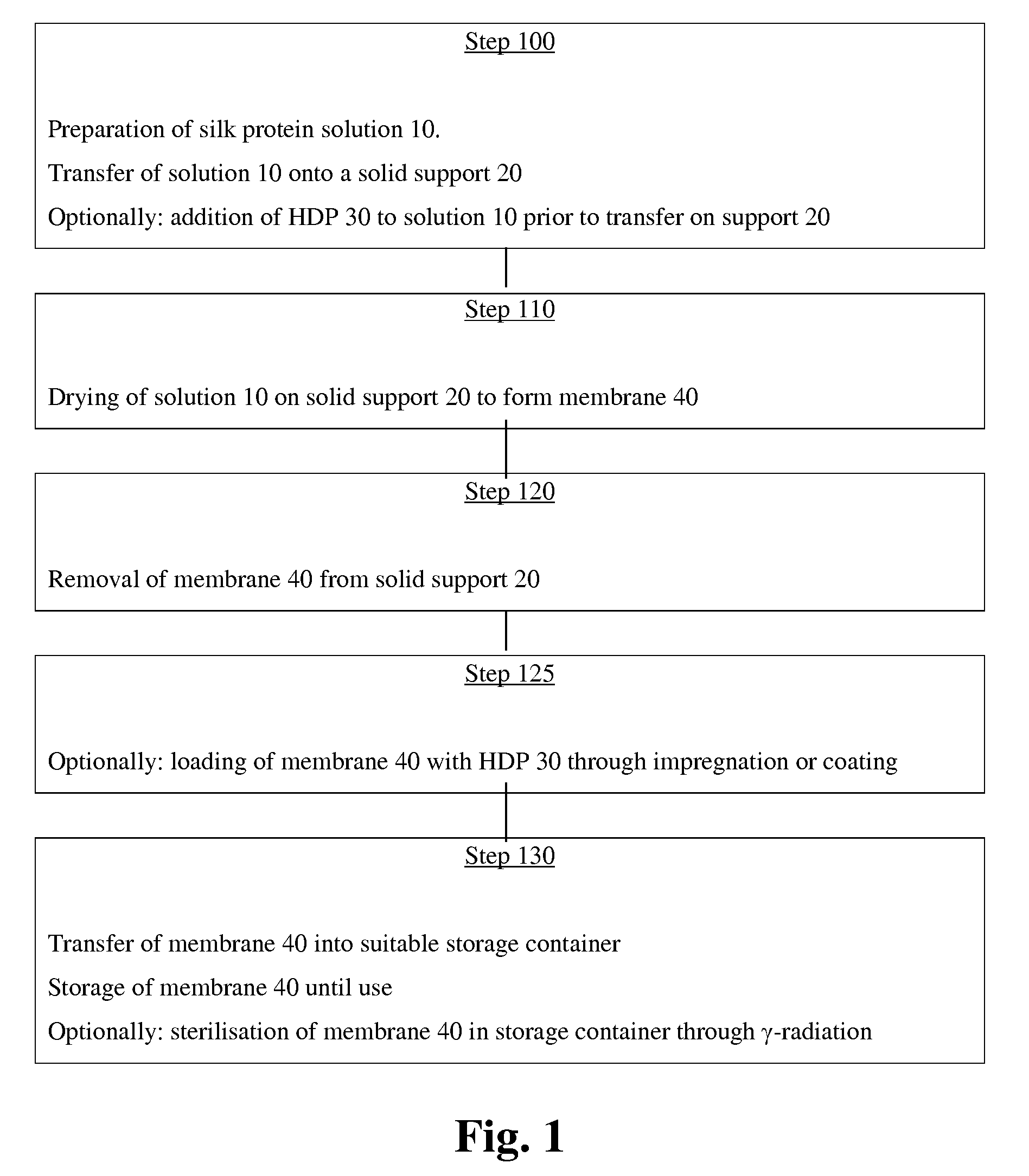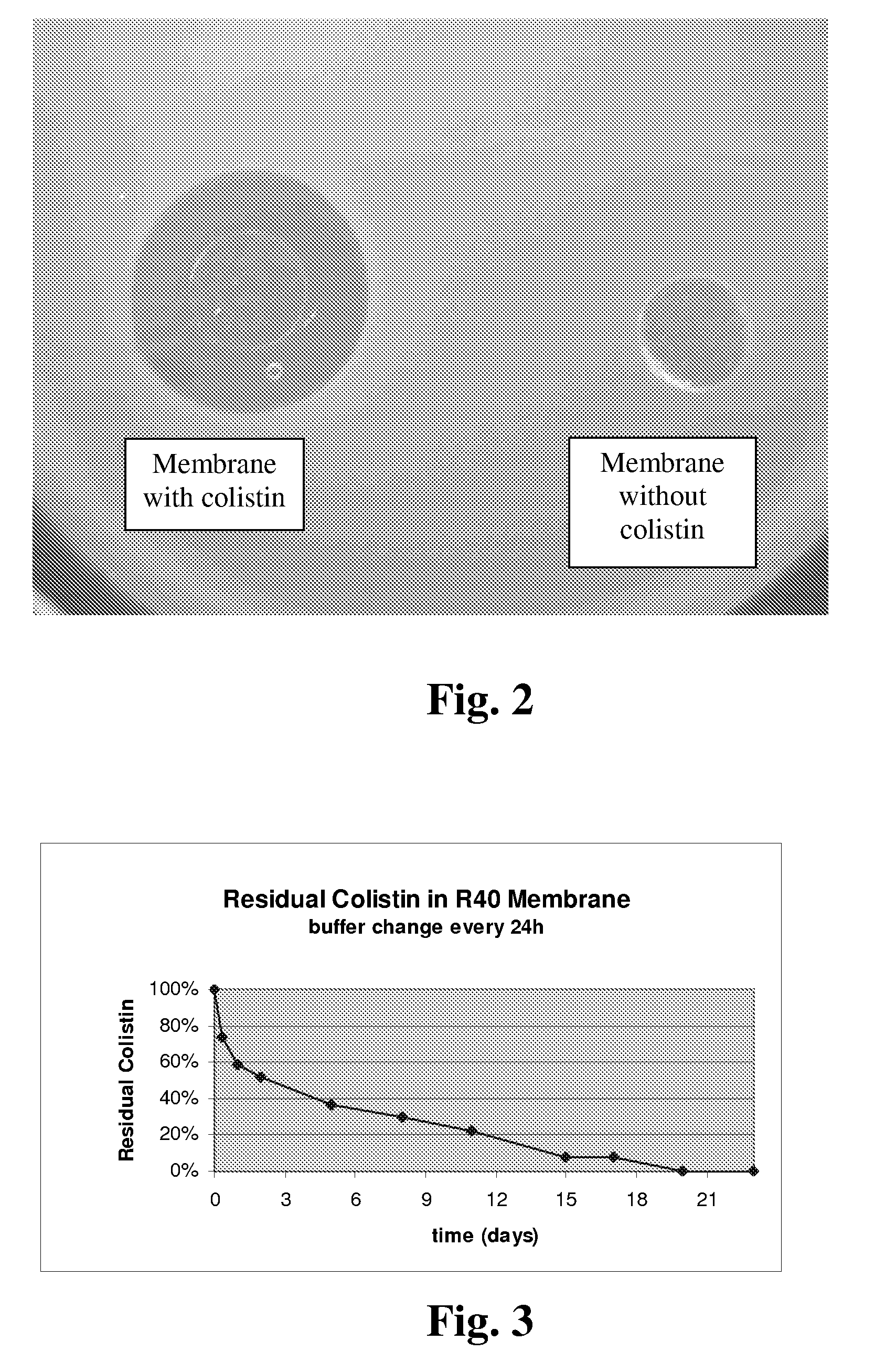Antibiotic dressing for the treatment of infected wounds
a technology for wounds and antibiotics, applied in the field of antimicrobial wound dressings, can solve the problems of inability to demonstrate clinical efficacy of wound dressings loaded with silver ions, the burden of health insurers on the treatment of chronic wounds, and the inability to choose alternative systemic antibiotics, etc., to prolong the retention time of wound dressings and improve the method of wound treatment.
- Summary
- Abstract
- Description
- Claims
- Application Information
AI Technical Summary
Benefits of technology
Problems solved by technology
Method used
Image
Examples
example 1
Resistance to Proteolysis of Silk Protein Membranes in Wound Fluid
[0035]Silk protein membranes 40 as silk fibroin membranes were made by transferring the protein solution 10 into the solid support 20. The solid support 20 was a casting form made from polytetrafluoroethylene of size 250×110×0.7 mm. The protein solution 10 was produced with the apparatus described in the international application PCT / EP2007 / 001775. After filling with the protein solution 10, the casting form 20 was left to dry over night at room temperature to yield the silk protein membranes 40 of 80 μm thickness. Without further physical treatment (e.g. heat, mechanical stress) or chemical treatment (e.g. protein denaturing agents, alcohols, cross-linking agents), the silk protein membranes 40 were then cut into rectangular samples (of size 10×3 mm) and transferred individually into 1.5 ml sample tubes. 400 μl of freshly harvested undiluted wound exudates from pig and human wounds were added to each ones of the samp...
example 2
Ultrastructural Analysis of Silk Protein Membranes by SEM
[0036]Cross-sections of the silk protein membranes, which were prepared according to the method described in Example 1, were analysed by SEM at high resolution. FIG. 9 (scale bar 2 μm) demonstrates a homogenous SEM ultrastructure of the silk fibroin membrane without detectable pores and without a detectable granular or micellar-like morphology.
example 3
Controlled Release of Colistin Out of Silk Protein Membranes
[0037]Round membrane samples 50 with a diameter of 6 mm were stamped out of the silk protein membranes 40 which had been prepared according to Example 1. The round membrane samples 50 were loaded with colistin sulphate (supplied by Carl Roth) through incubation in a colistin solution (10 mg / ml) for 18 hours at room temperature. The incubated round samples 50 were then kept individually in 2 ml solution at room temperature for up to 23 days. Each solution was refreshed every 24 hours in order to simulate wash-out. At defined time points (8 hours and 1, 2, 5, 8, 11, 15, 17, 20, 23 days), the round membrane samples 50 were retrieved, dried and analysed through radial diffusion assay.
[0038]This radial diffusion assay was performed by transferring each one of the round membrane samples 50 onto top-agar plates made by dissolving 32 g LB-Agar Lennox (from Carl Roth) in 400 ml water and adding log-phase E. coli BL21-T1 cells (from ...
PUM
| Property | Measurement | Unit |
|---|---|---|
| Length | aaaaa | aaaaa |
| Time | aaaaa | aaaaa |
| Time | aaaaa | aaaaa |
Abstract
Description
Claims
Application Information
 Login to View More
Login to View More - R&D
- Intellectual Property
- Life Sciences
- Materials
- Tech Scout
- Unparalleled Data Quality
- Higher Quality Content
- 60% Fewer Hallucinations
Browse by: Latest US Patents, China's latest patents, Technical Efficacy Thesaurus, Application Domain, Technology Topic, Popular Technical Reports.
© 2025 PatSnap. All rights reserved.Legal|Privacy policy|Modern Slavery Act Transparency Statement|Sitemap|About US| Contact US: help@patsnap.com



